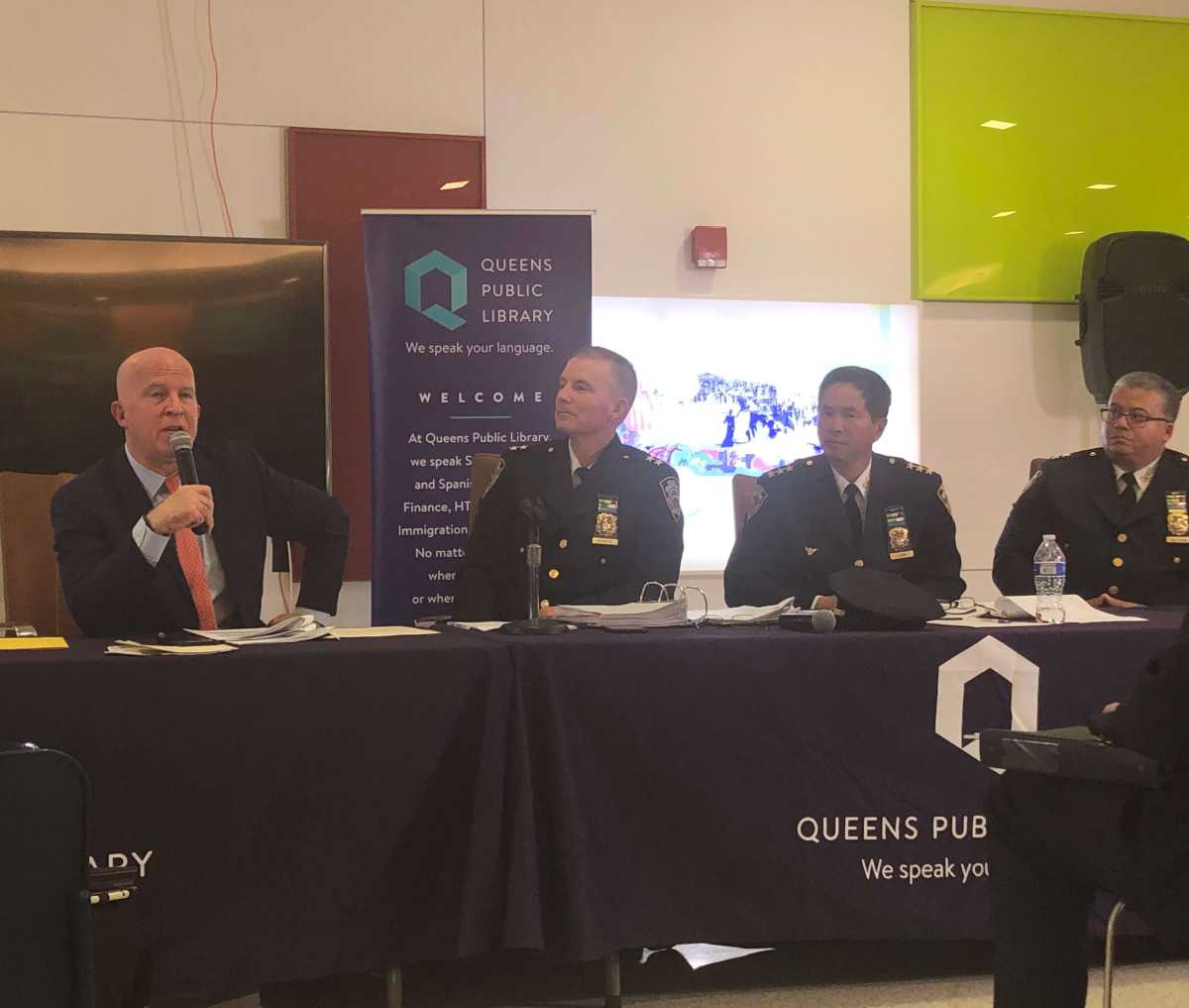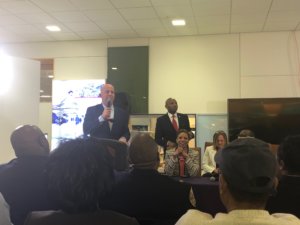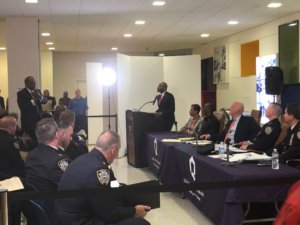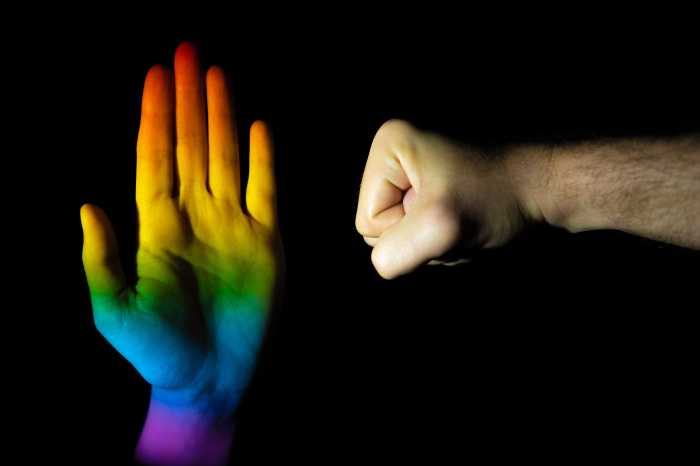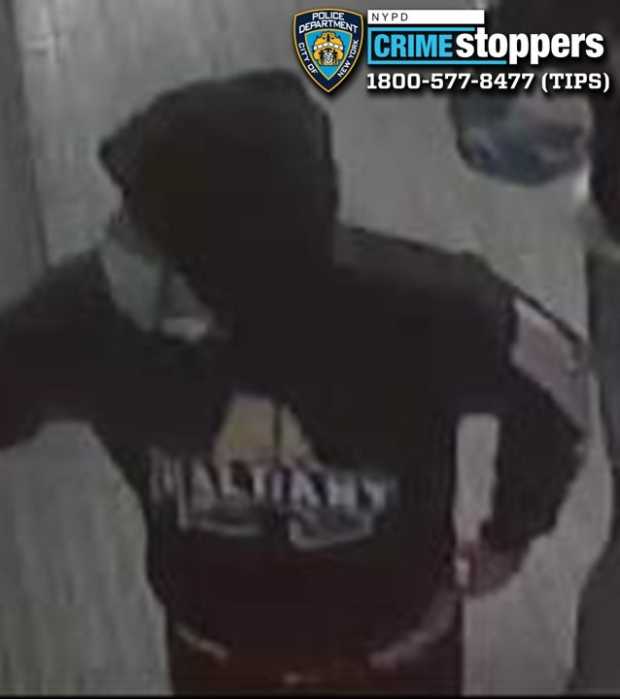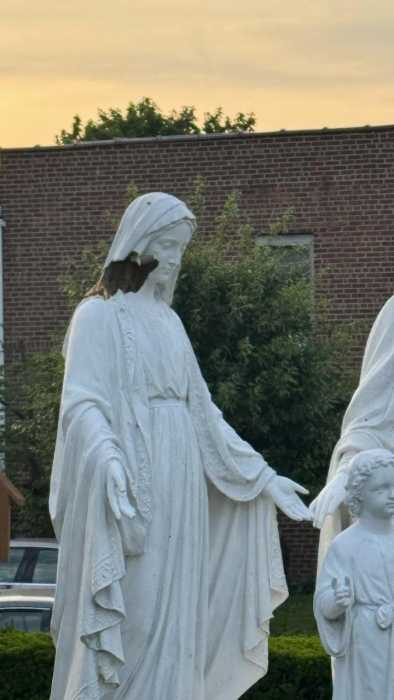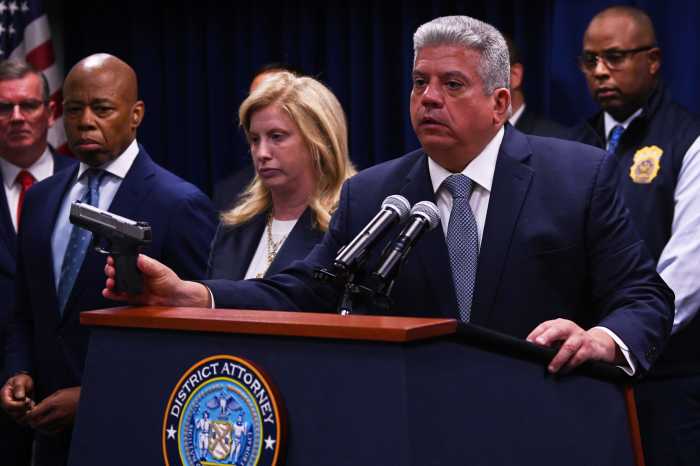Hundreds of southeast Queens residents filled the Queens Library Central Plaza Monday evening for an open, truthful dialogue with NYPD Commissioner James P. O’Neill on the legalization of marijuana and building trust and strengthening the relationship between the NYPD and community.
The Southeast Queens NYPD Public Safety Town Hall with O’Neill was organized by City Councilman Donovan Richards, chair of the New York City Council Public Safety Committee. Richards was joined by NYPD officials, Councilwoman Adrienne Adams, Councilman I. Daneek Miller, Congressman Gregory Meeks and Borough President Melinda Katz.
“Tonight’s meeting is an example of how we can break down barriers of communicating between police and communities to make our neighborhoods the best they can be,” said Richards. “We may not always agree on how we get there, but we can never stop talking because the best path forward is often found in the middle ground of a disagreement.”
According to Richards, over the last year and a half, community lawmakers have worked together with the NYPD to reduce marijuana arrests and summonses, improvement of the Special Victims Division, an increase in transparency in the NYPD’s internal discipline system, and the construction of a new 116th Precinct planned for Rosedale.
A topic of discussion in the forefront, audience members asked O’Neill about the legalization of recreational marijuana.
“I know that marijuana is becoming legal and all of that, but do we have to smell that every place we go?” said Cynthia Hall, who has been living in the community for 42 years.
Another resident who is opposed to legalization of marijuana asked, “Why should we legalize it?”
According to O’Neill, his biggest concern about the possibility of marijuana becoming legal in New York state is driving under the influence, noting there is no instantaneous test for marijuana like there is for alcohol.
“I have a number of concerns now. In all the states where it’s legalized, it’s not legal under 21 and we’ll have that challenge,” he said. “The black market where people are selling it illegally, what do we do then? Moving forward hopefully we’ll be able to address that.”
The NYPD has changed their internal rules and regulations as far as enforcement with possession and summonses, burning in public (depending on a person’s criminal history), which O’Neill said, is now a summons too.
“Do I want to lock up some 16- or 17-year-old kid for smoking weed that doesn’t have a criminal history? I don’t want to do that. I don’t want to burden them with a criminal history like that. But sometimes we do have to arrest people depending on who they are and what they’re involved in,” said O’Neill.
According to Richards, who supports the decriminalization of marijuana, the Southeast Queens community has led the city with 10 years of marijuana summonses and arrests.
“Council member Miller and myself and colleagues have done a lot of work to reform marijuana here in the way it’s policed here in our community,” said Richards. “It’s important to recognize that people across all races smoke marijuana at the same rate, but 86 percent of the rest and summonses were in communities of color. We have to work to reform that. We know it’s a delicate balance when you’re talking about quality of life.”
Other residents brought forth the past history of police interactions in the community and how to approach an officer for support without fear of being mistreated.
“Based on the Critical Intervention Training, if they still have their biases and maybe slight racism, I don’t know because some people do, what do you do with those types of officers who don’t know how to be respectful?” said Allison Belmosa, of St. Albans, who experienced an unpleasant encounter with a police officer in 2010.
Commanding Officer of the 113th Precinct, Inspector Jerry O’Sullivan, said they have made changes and will continue to do so.
“We don’t tolerate people being spoken to disrespectfully at our precinct. I’ve addressed that on many issues and we’ve come a long way. With the NCO officers, there would not be NCO officers if I feel that they’re well rounded. We have to lead by example. I’m not going to allow anyone to be disrespected. We won’t tolerate it, and I won’t tolerate it.”
Another resident asked, “What is the NYPD doing to recruit more ethnic groups and backgrounds to have more representation in communities that they police? As a young black man, I feel like when you do see a police officer, no matter how nice or respectful you are, it feels more comforting seeing someone who looks like you.”
O’Neill noted the diversity of the NYPD and recruits that join the department to serve in communities.
“They go up through the ranks and it’s getting better and better,” said O’Neill. “You have to have a police department that reflects the diversity of the city or else you’re not going to get to build trust.”
In regards to the stop-and-frisk protocol by the NYPD, Miller said, “They weren’t doing well, but they’re now definitely on course and doing better building a relationship not only with the leadership of the NYPD, but with the police officers in the community.”
Adams encouraged the community to continue to have a dialogue with the police officers and to participate in the NCO meetings.
“What I hear a lot in our community is we’ve got issues and we’ve got a history with law enforcement that is not a pretty history and with history comes baggage, and with baggage comes a time of healing,” said Adams. “I’m going to encourage my beautiful black and brown community and everything in between to begin the healing process on your own. Start to engage with our partners in the NYPD. We are not their enemy and they’re are not our enemy. They are here to lawfully to protect and serve you.”

